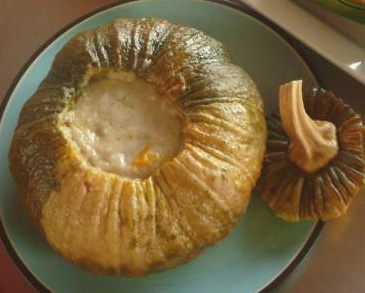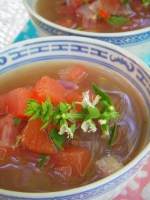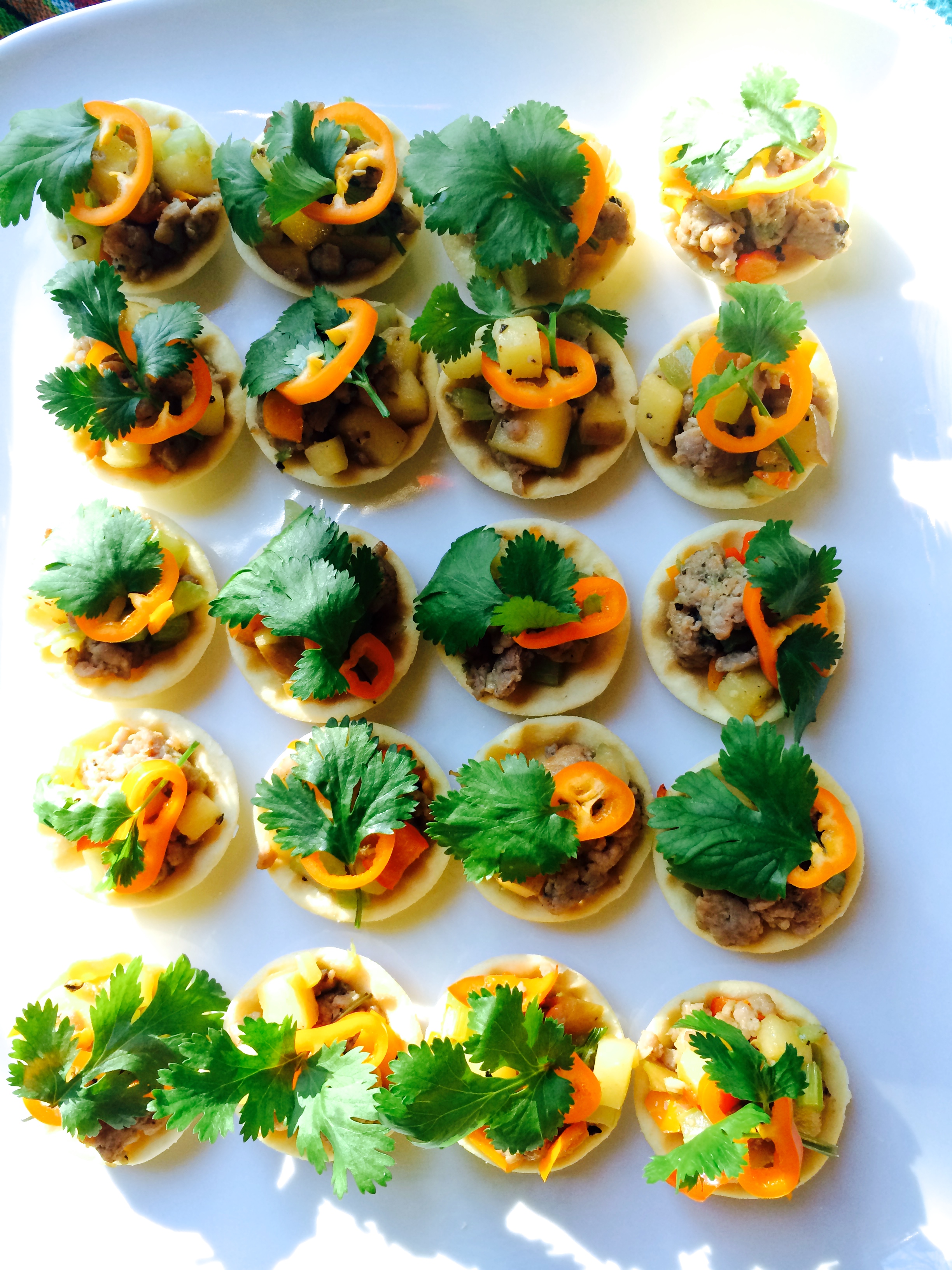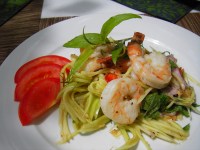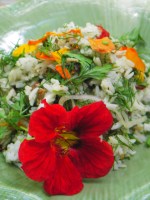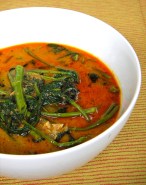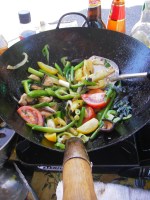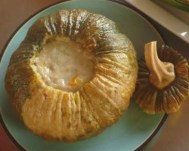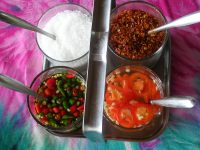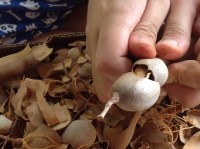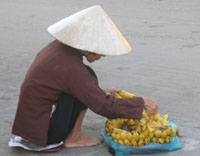Pandanus leaf (Bai Toey), a Thai Culinary Treasure
Something about spring made me want to share my favorite cup of tea recipe with you. Maybe it is the fragrance of fresh pandanus leaf, which is like fresh green grass, or jasmine rice that makes me anticipate more spring. The long narrow leaf looks like a gladiolus leaf however pandanus belongs in the screw pine genus. It is known in Southeast Asia as Pandan. Besides using the leaf for cooking, I grow Bai Toey as a decorative plant and use it in flower arrangements. In my village in the old days, every household grew them near a damp place in their garden. If you are interested in growing Pandan as a house plant, please check with your local nursery. The scientific name for Bai Toey is Pandanus Amaryllifolius.

Pandanus Leaf-Bai Toey
Thai cooking depends on Bai Toey much like Westerners depend on vanilla. That is a simple comparison I often use when I introduce this plant in my cooking classes. But pandanus leaf has so many uses I would need many pages and recipes to show and tell you all of them. But I will try to make it short and just highlight the plant’s significant qualities. Over time I will provide recipes in upcoming posts that highlight the broad uses of Bai Toey.
Below are pictures and short descriptions of how I have used pandanus during the past four months while I was in Thailand and in my classroom and my kitchen here in Seattle.
Thais use pandanus leaves to make rose flowers for worship or to use as an air freshener.
Please click the picture to see Pranee’s YouTube video and learn how to make rose flowers from pandan leaves.

Pandanus leaf cups
Thais use Pandanus leaves to make decorative containers.

Adding green color extract from pandanus leaf to pearl tapioca pudding
Thais extract the green color from Pandanus to use as food coloring in Thai desserts.
A Perfect Thai Herbal Tea
My usual cup of tea is a light tea that I brew from a combination of pandanus leaf and jasmine tea. I grew up with this tea in a village where, in addition to the famous Thai Ice Tea, it seemed to be available everywhere, rain or shine, in everyone’s kitchen, or to welcome guests at a big gathering. For funerals or other large functions, this tea is brewed in large quantities, steeped in a pot that can serve up to 100 people. I love this tea both warm and cold. The fragrance and flavors of pandan leaves and jasmine tea seems to be a perfect pair – my favorite combination. Not to mention that my favorite hand lotion from Thailand is a combination of pandan leaf and jasmine—classic Thai aromatherapy. Please click here to learn more about pandan leaves and their medicinal benefits.
Pandan leaf is available fresh or frozen at Asian markets.

Jasmine Pandanus Tea
Cha Mali Toey Horm
ชามะลิใบเตย
Jasmine and pandanus is a classic fragrant infusion for Thai tea and desserts. This tea is very popular, but it is served mostly at large group functions such as funerals. In my village it is prepared in a large pot three feet in diameter by three feet tall, ready to serve tea for the whole village. It can be served with a snack, dinner or dessert. Serve plain without sugar. The tip is don’t make the tea too strong.
1 to 2 teaspoons loose jasmine tea 1 pandanus leaves, torn lengthwise into narrow strip and tied in a bun, or folded to fit the teapot 2 cups boiling waterPlace jasmine tea and pandanus leaf in a teapot. Pour boiling water over all and let it steep for 5 minutes. Serve right away.
© 2011 Pranee Khruasanit Halvorsen I Love Thai cooking Pranee teaches Thai Cooking classes in the Seattle area. Her website is: I Love Thai cooking.com .




